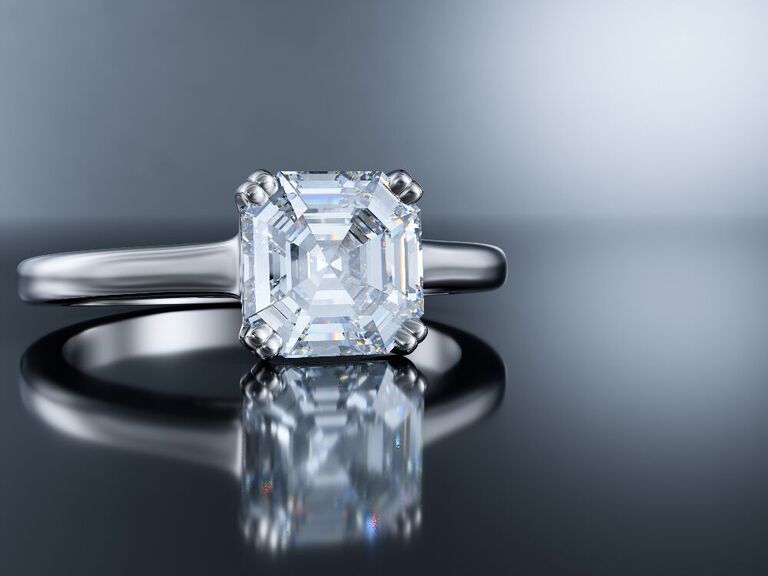
In the realm of cultural heritage, the preservation of historical artifacts is paramount, particularly for treasures like the French royal engagement ring. These exquisite pieces are not only symbols of love but also bear witness to centuries of royal history and craftsmanship. As custodians of cultural memory, institutions and museums are increasingly turning to advanced technology to enhance the preservation efforts of these invaluable artifacts. From state-of-the-art conservation techniques to innovative display methods, technology is playing a crucial role in safeguarding these royal engagement rings for future generations.
One of the most significant advancements in the preservation of engagement rings is the use of digital imaging and 3D scanning. These technologies allow for the detailed documentation of each ring, capturing intricate details that the naked eye might miss. High-resolution imaging provides an accurate representation of the ring’s condition, including any wear, damage, or alterations it may have undergone over time. This data is invaluable for conservators, enabling them to monitor changes and assess the need for restoration or conservation efforts.
Additionally, 3D scanning technology allows museums and conservators to create digital models of the rings. These models can be used for various purposes, including virtual exhibitions, educational resources, and even virtual reality experiences that immerse visitors in the history of these royal artifacts. This approach not only enhances public engagement but also provides a safeguard against the potential loss of the physical object, allowing people to appreciate its beauty and significance without direct contact.
Environmental monitoring technology is another critical aspect of preserving engagement rings. The conditions in which these pieces are stored and displayed can significantly impact their longevity. Factors such as temperature, humidity, and light exposure can lead to deterioration, especially in delicate materials like gold, silver, and gemstones. Advanced sensors and monitoring systems can track these environmental conditions in real-time, alerting conservators to any fluctuations that may pose a risk to the artifacts. This proactive approach allows for immediate intervention, ensuring that the engagement rings remain in optimal conditions.
Moreover, technology has facilitated the development of specialized conservation materials that better protect jewelry pieces. For instance, modern adhesives and coatings can provide a protective barrier against environmental pollutants and physical wear without compromising the ring’s aesthetic appeal. These materials are designed to be reversible, allowing conservators to remove them in the future without damaging the original piece. This emphasis on using cutting-edge conservation materials reflects a growing understanding of the importance of maintaining the integrity of historical artifacts while ensuring their protection.
The role of technology extends beyond preservation techniques; it also enhances educational outreach and public engagement. Museums can now leverage digital platforms to reach broader audiences, showcasing royal engagement rings and their histories through virtual exhibitions, online collections, and interactive educational resources. Social media and dedicated websites allow institutions to share stories about these rings, highlighting their significance and fostering a sense of connection with the public. This increased accessibility encourages a deeper appreciation for the history and artistry of French royal engagement rings.
Furthermore, advances in artificial intelligence (AI) and machine learning are beginning to impact the field of conservation. These technologies can analyze vast amounts of data related to the condition of artifacts, providing insights into deterioration patterns and helping conservators make informed decisions about preservation strategies. By utilizing predictive analytics, institutions can identify potential risks before they become critical, ensuring proactive rather than reactive preservation efforts.
In addition, technology facilitates collaboration among museums and institutions worldwide. Digital databases and communication platforms enable the sharing of knowledge and expertise, allowing conservators to learn from one another and adopt best practices in preserving engagement rings and other royal artifacts. This collaborative spirit enhances the overall preservation efforts, ensuring that cultural heritage is protected on a global scale.
In conclusion, technology plays a transformative role in the preservation of French royal engagement rings, enhancing documentation, conservation, and public engagement. From digital imaging and environmental monitoring to advanced materials and collaborative efforts, these technological advancements ensure that these exquisite artifacts remain safeguarded for future generations to admire and appreciate. By integrating technology into preservation practices, museums not only protect the physical integrity of royal engagement rings but also enrich the narratives that surround them, fostering a deeper understanding of their historical and cultural significance. As we continue to explore the potential of technology in the preservation of cultural heritage, the future of these royal treasures looks promising, ensuring that their legacy endures.
